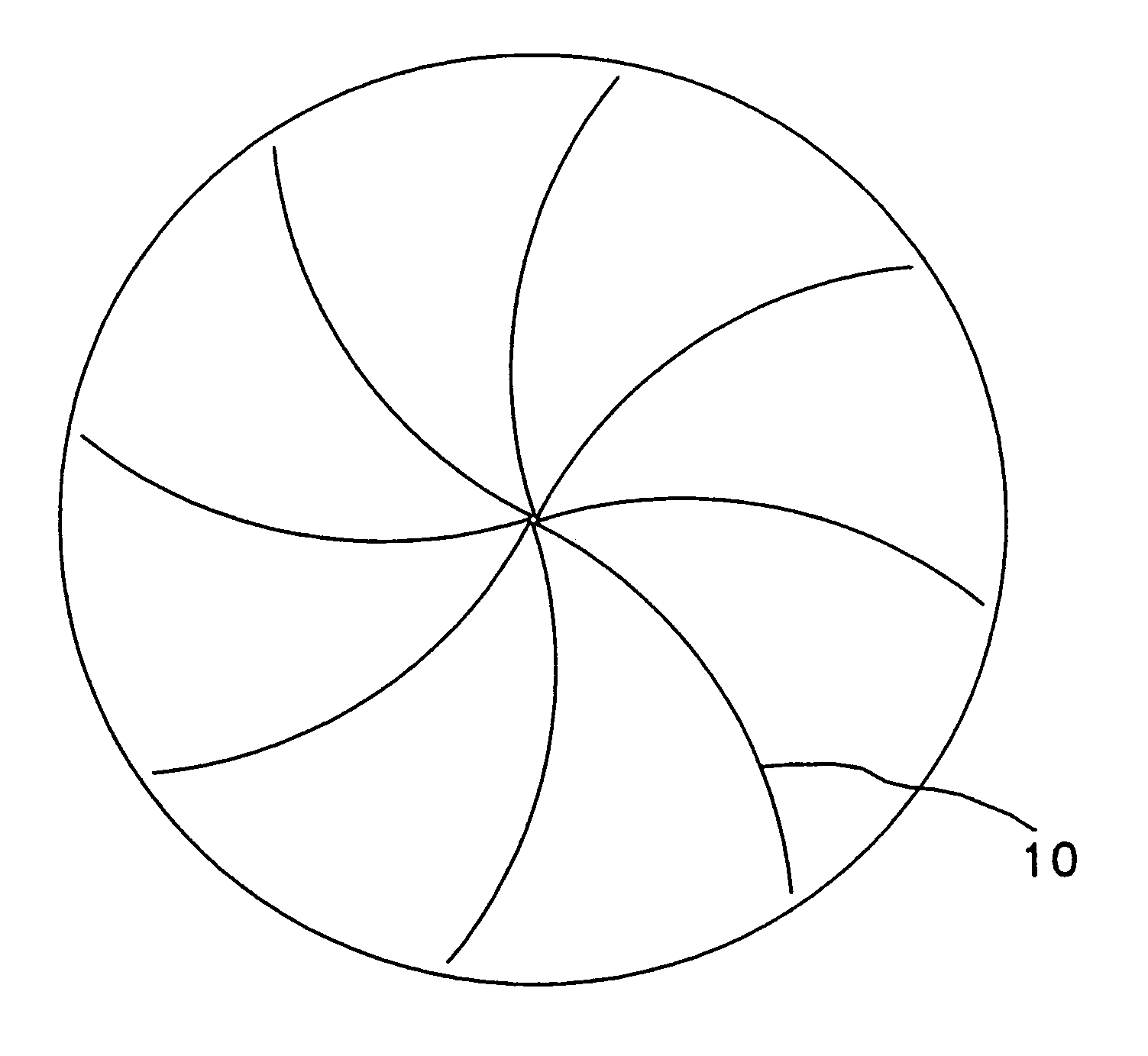Polishing pad for use in chemical-mechanical planarization of semiconductor wafers and method of making same
a technology of semiconductor wafers and polishing pads, which is applied in the direction of grinding/polishing apparatus, grinding machines, manufacturing tools, etc., can solve the problems of short circuit, open circuit, and inability to use valuable products, and achieve the effect of improving the life of the cmp polishing pad, reducing the cost of cmp consumables, and prolonging the li
- Summary
- Abstract
- Description
- Claims
- Application Information
AI Technical Summary
Benefits of technology
Problems solved by technology
Method used
Image
Examples
Embodiment Construction
[0020]The polishing pad of the present invention is a wet-laid, three-dimensional, porous, fibrous structure that is impregnated and bound together with a thermoset resin that is creep-resistant. Nanometer-sized, conditioning-reinforcing fillers contained in the base paper, resin, or both, serve to reinforce this structure, providing optimum resistance to plastic flow, or creep, and wear, whereby, during pad-conditioning of the polishing surface of the pad, less material need be removed as compared to a pad without these nanometer-sized, conditioning-reinforcing fillers. This is in contrast to prior-art CMP polishing pads that use fillers that are micrometer-sized to improve and enhance the actual polishing process of the substrate during the CMP process proper. The polishing pad of the invention is provided with the conditioning-reinforcing filler particles by adding them during the step of mixing the paper slurry, by adding them to the thermoset resin to form a mixture of thermose...
PUM
| Property | Measurement | Unit |
|---|---|---|
| size | aaaaa | aaaaa |
| height | aaaaa | aaaaa |
| height | aaaaa | aaaaa |
Abstract
Description
Claims
Application Information
 Login to View More
Login to View More - R&D
- Intellectual Property
- Life Sciences
- Materials
- Tech Scout
- Unparalleled Data Quality
- Higher Quality Content
- 60% Fewer Hallucinations
Browse by: Latest US Patents, China's latest patents, Technical Efficacy Thesaurus, Application Domain, Technology Topic, Popular Technical Reports.
© 2025 PatSnap. All rights reserved.Legal|Privacy policy|Modern Slavery Act Transparency Statement|Sitemap|About US| Contact US: help@patsnap.com


